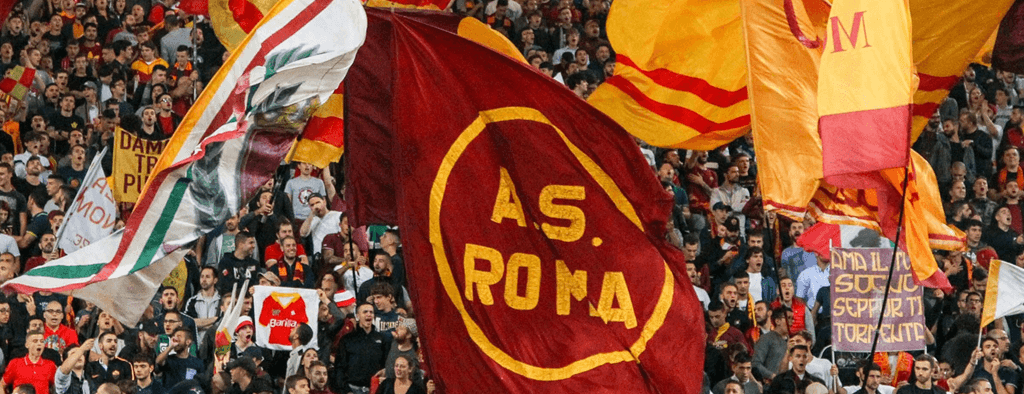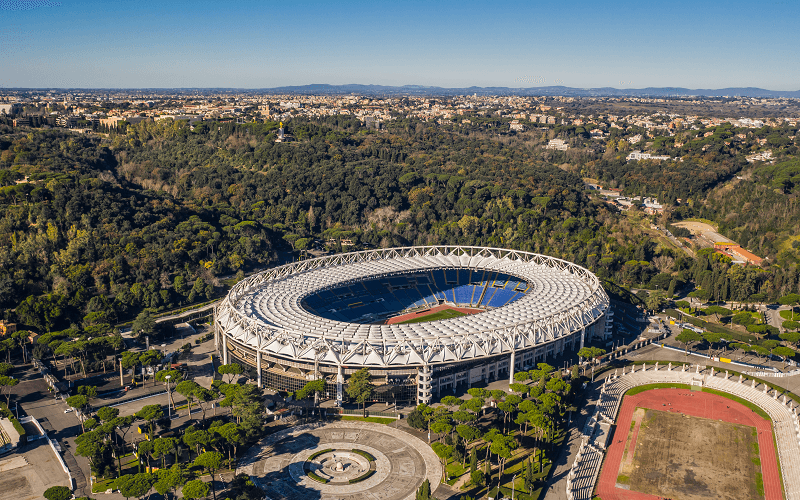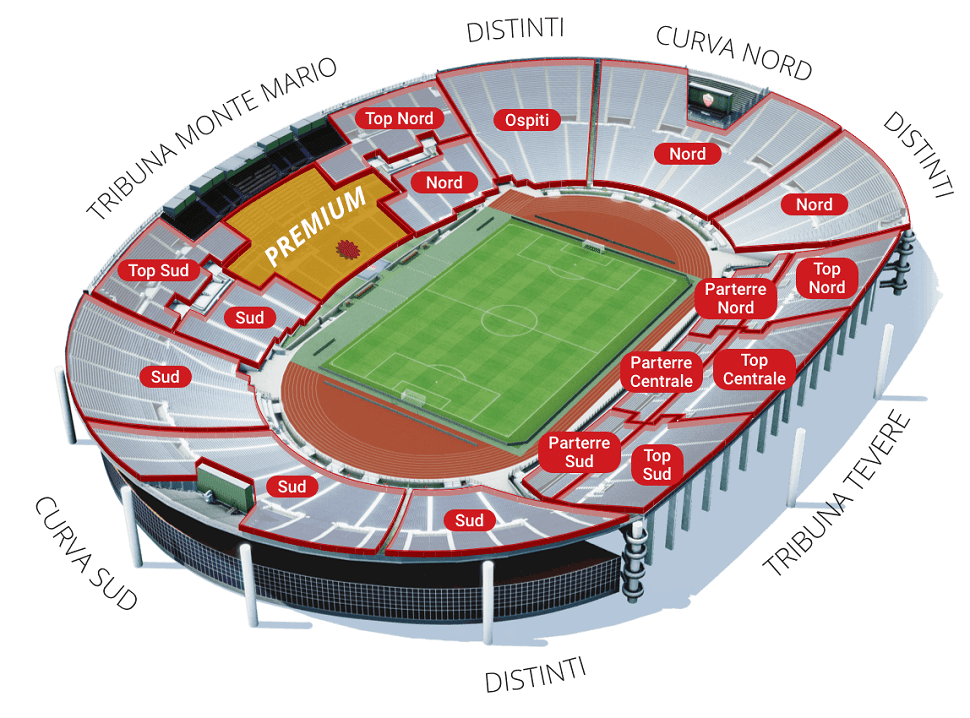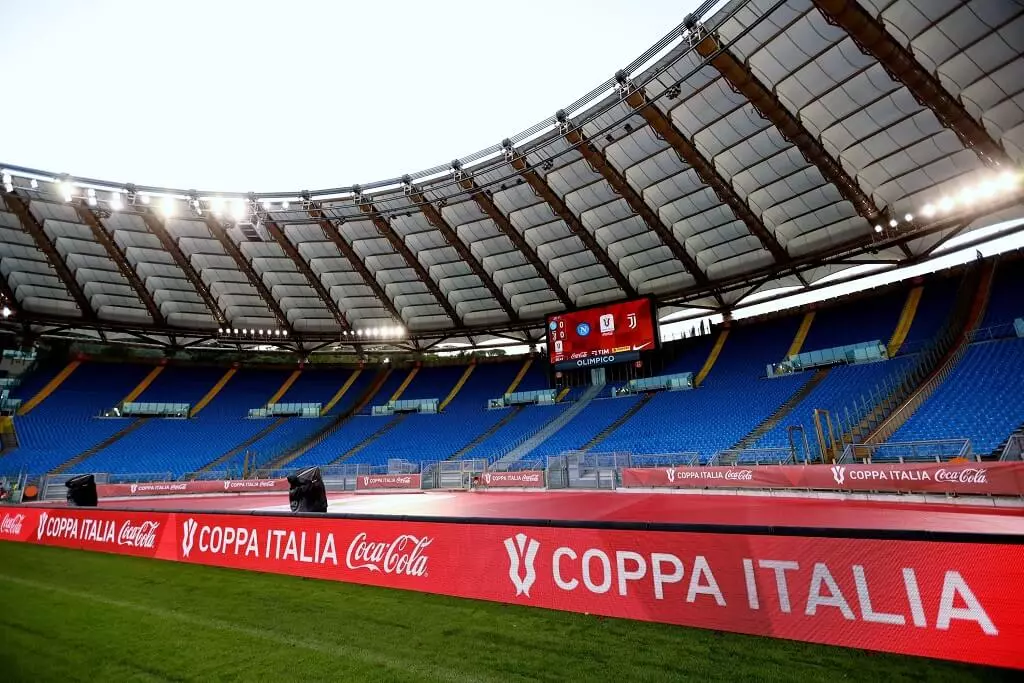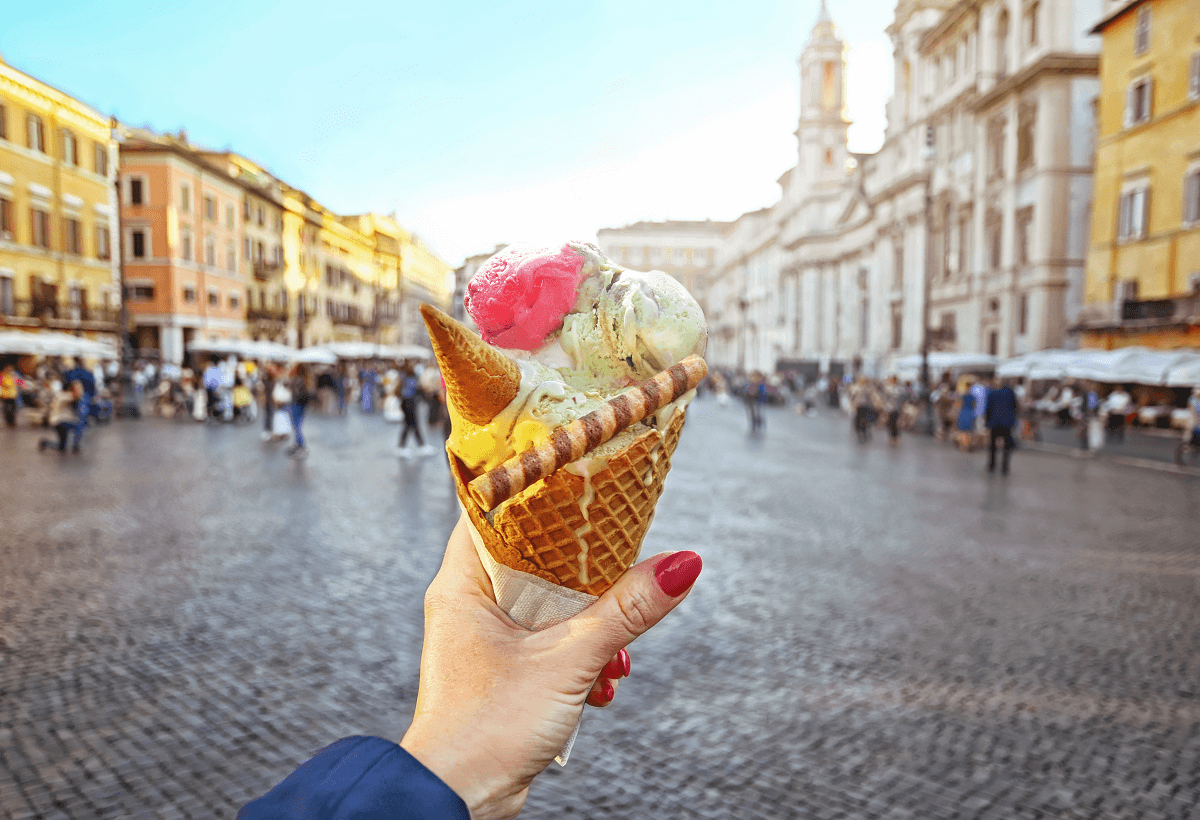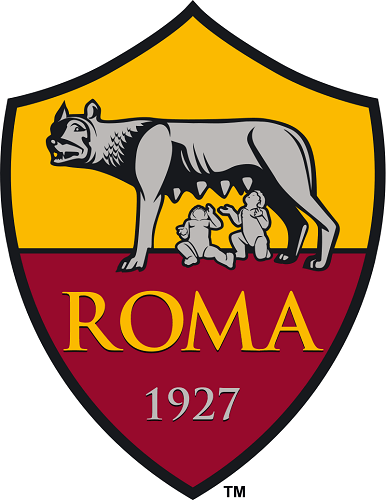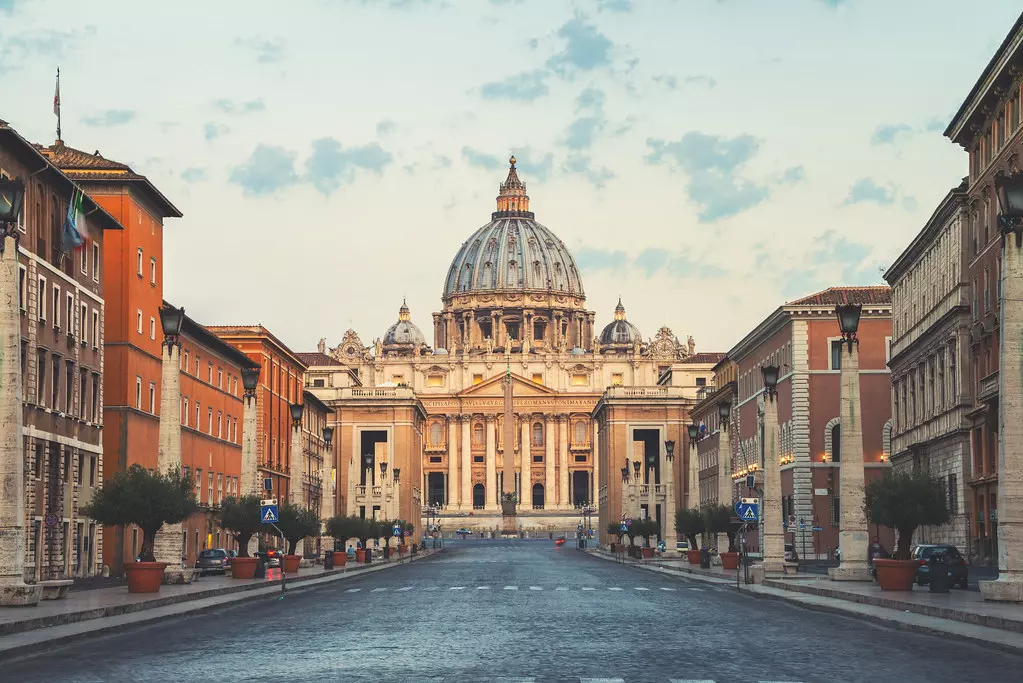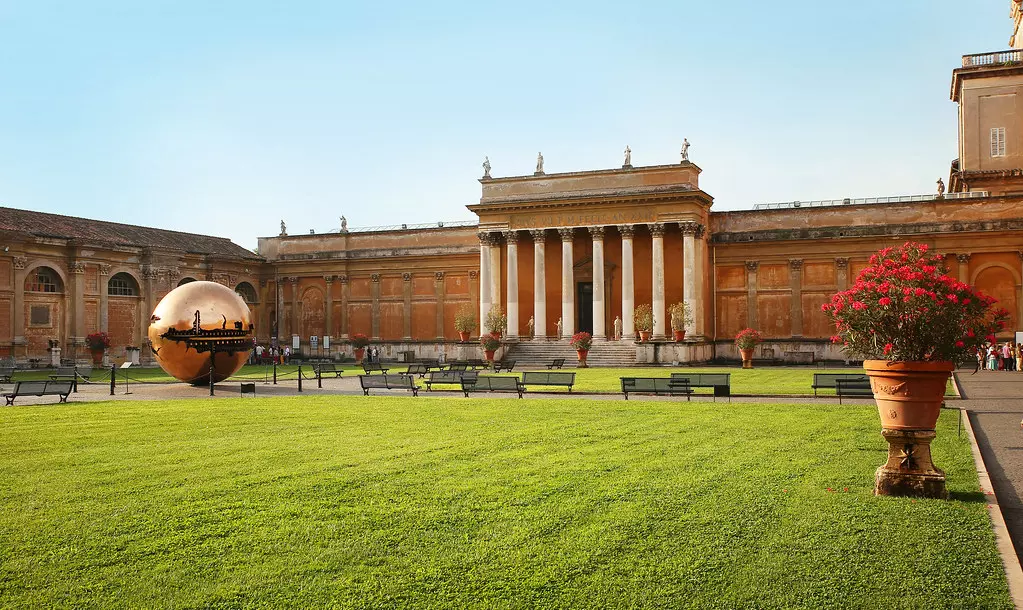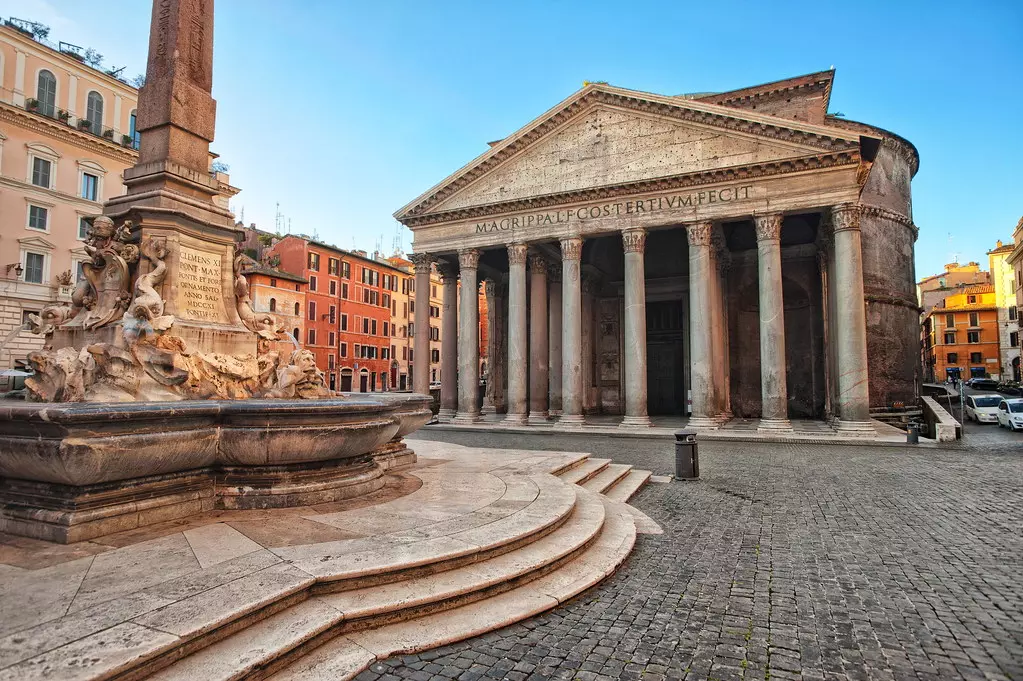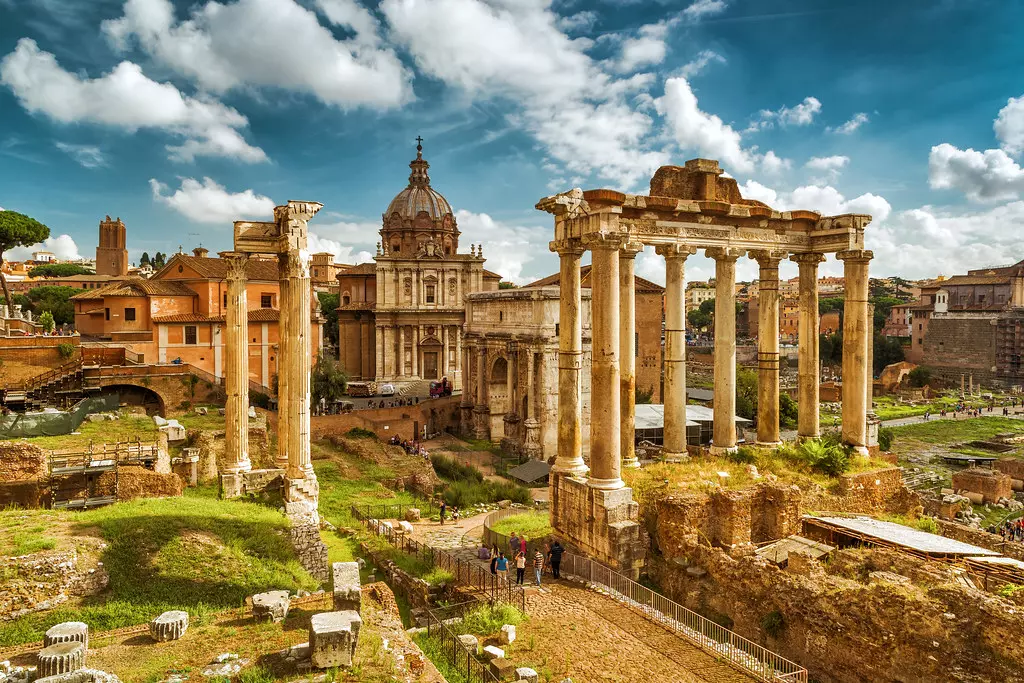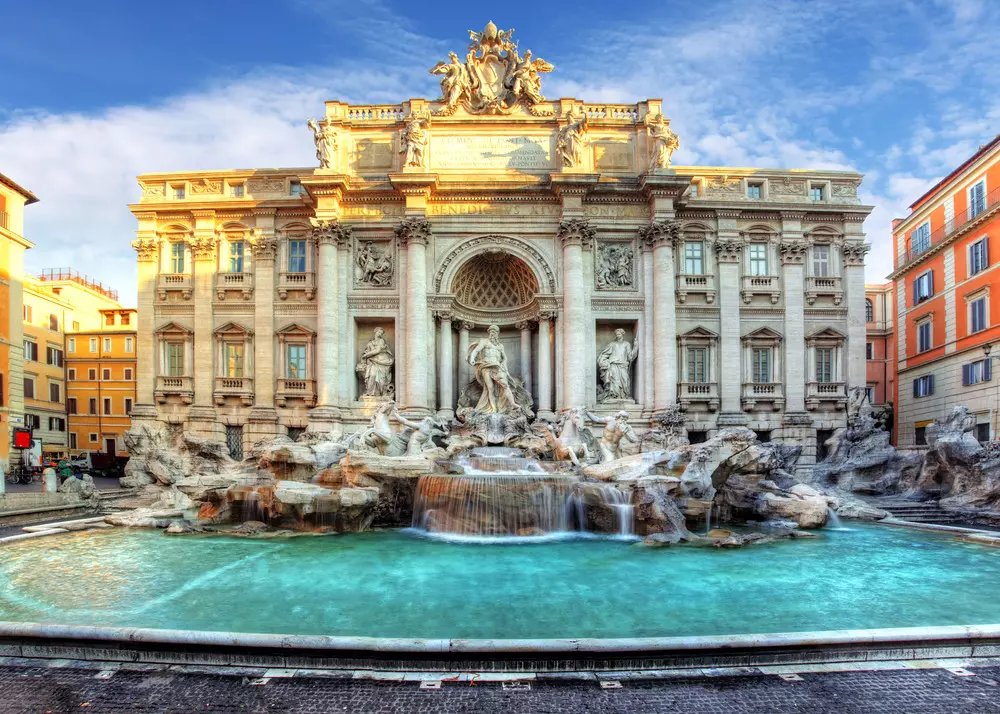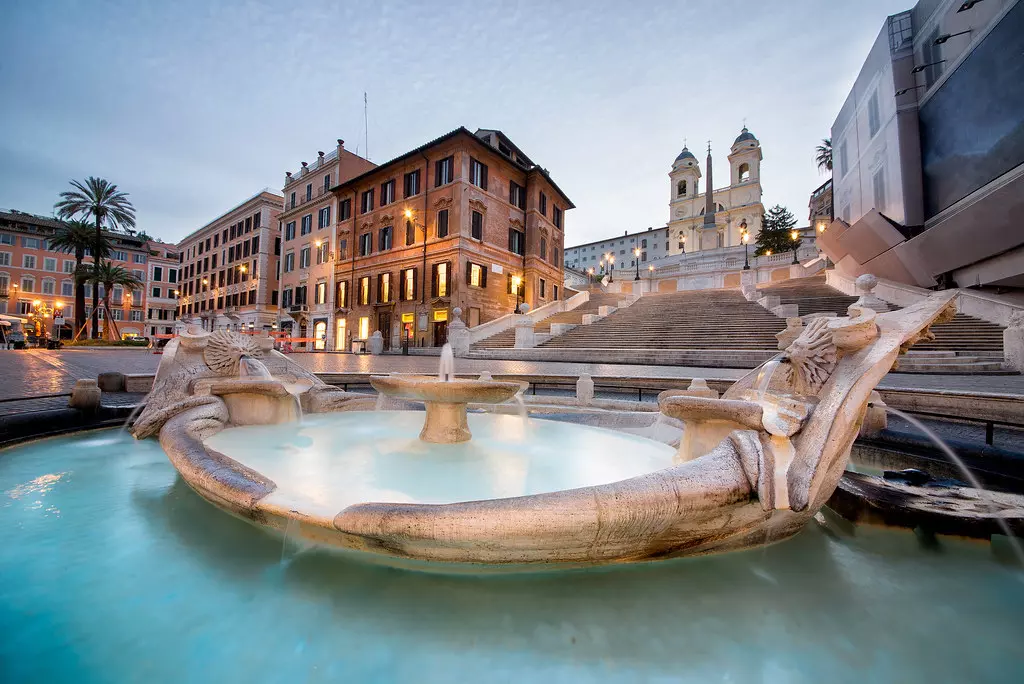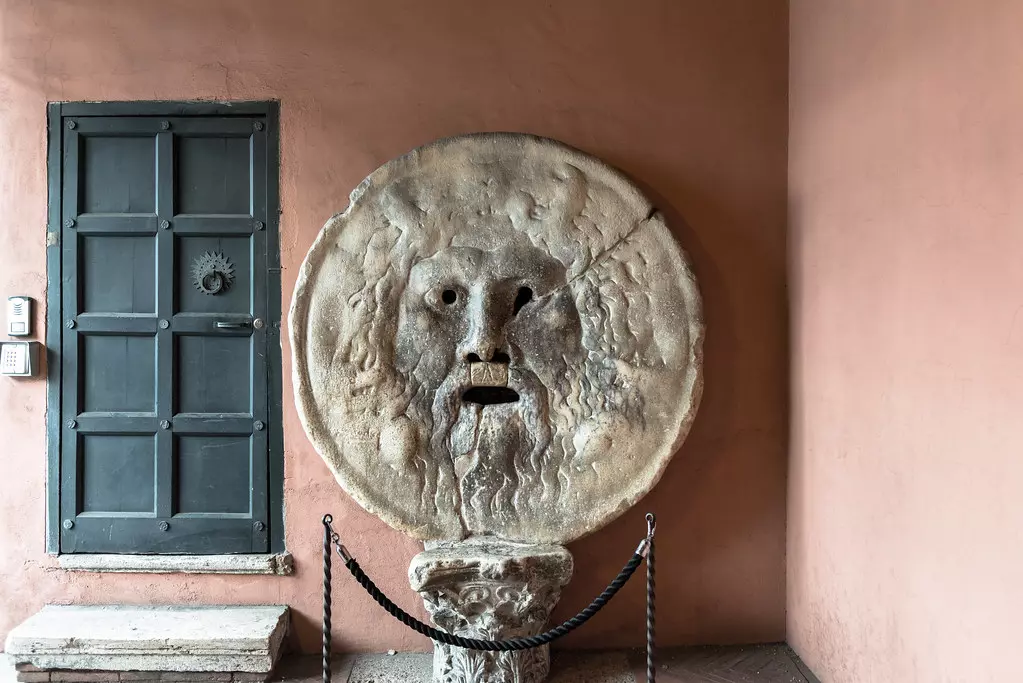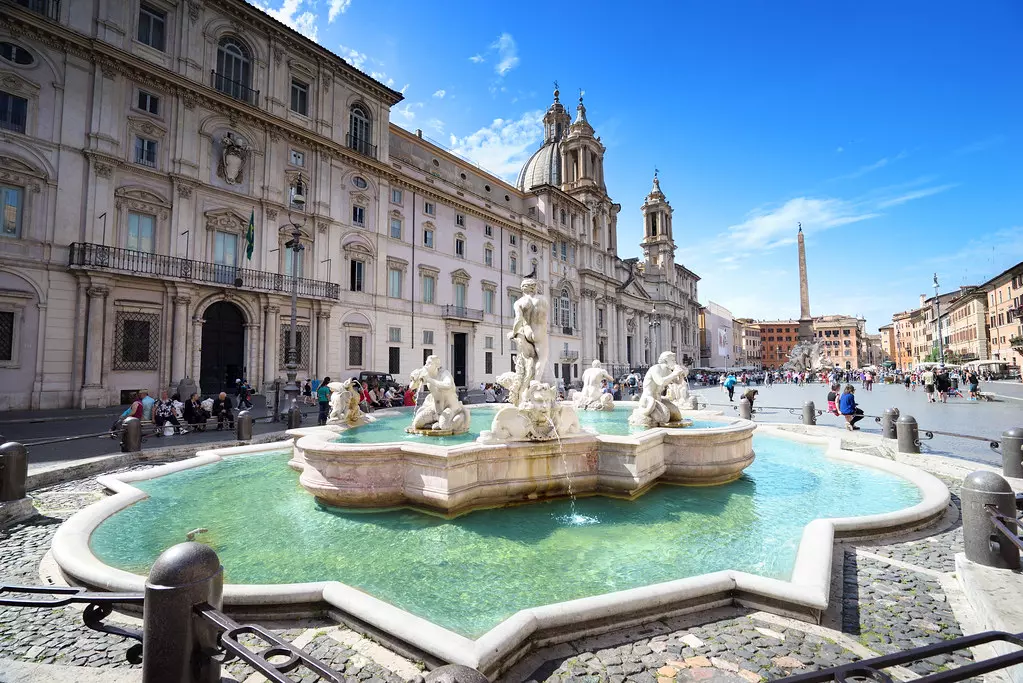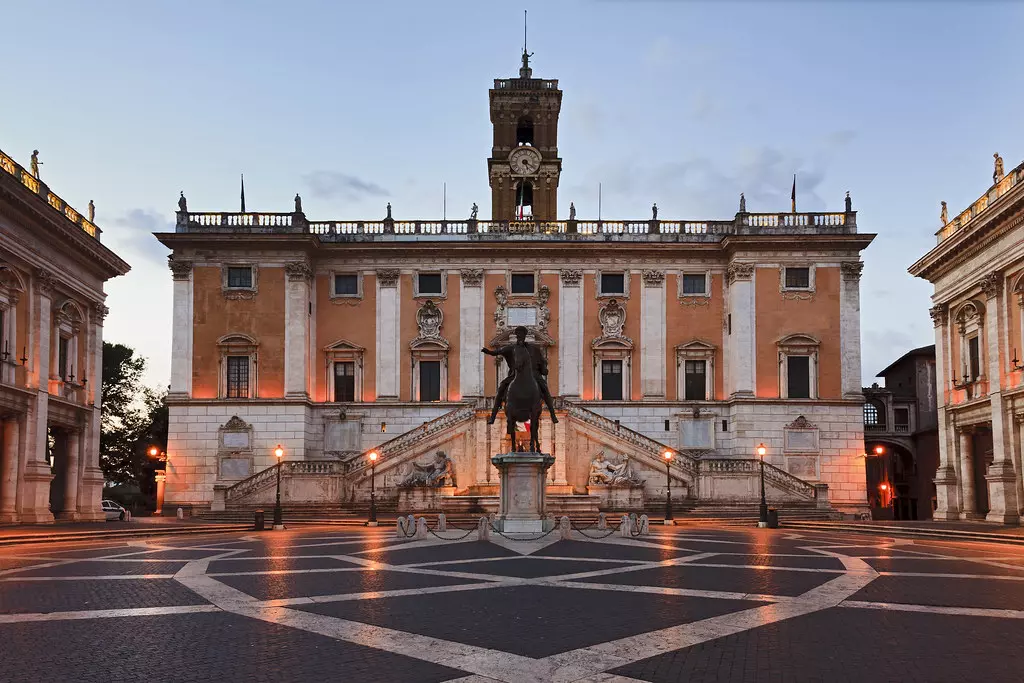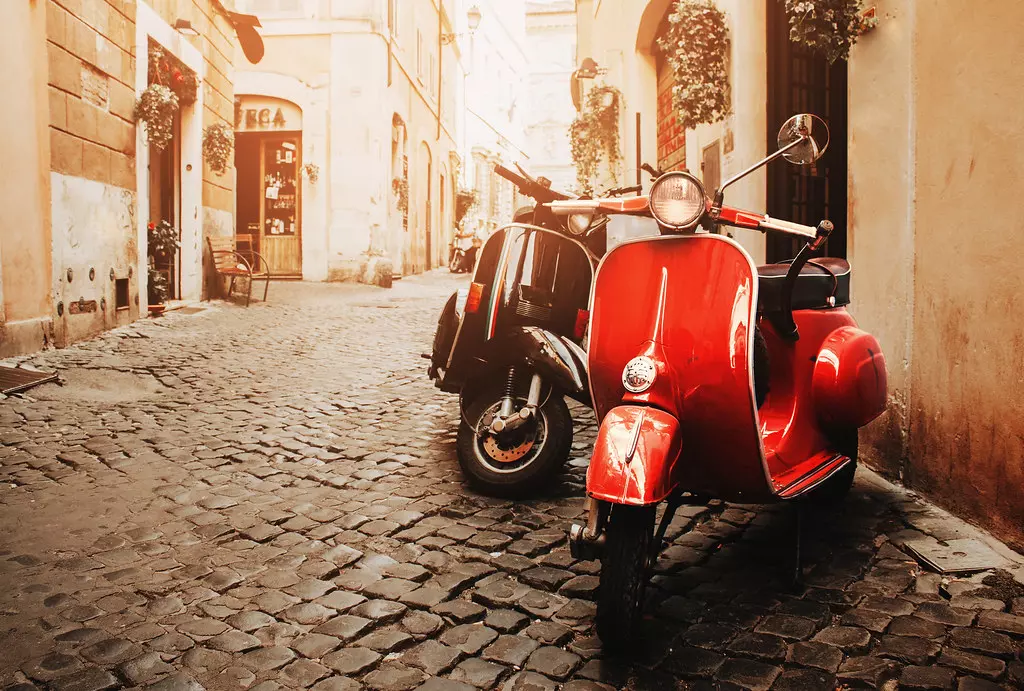Tip! Make sure you have a valid ticket. + Read more
- Paper or e-tickets
- A carefree experience
AS Roma
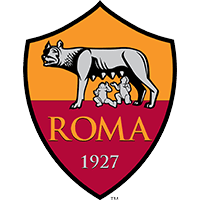
Football trip
AS Roma

Tip! Make sure you have a valid ticket. + Read more
- Paper or e-tickets
- A carefree experience
Tip! Make sure you have a valid ticket. + Read more


Tip! Make sure you have a valid ticket. + Read more
Book your complete football trip to AS Roma, easily customised. Select which match, hotel and seat conveniently in one place. No booking fees.
Watching an AS Roma match live is an unbelievable experience. The Stadio Olimpico is the largest stadium in Italy with a capacity of 70,634. The team shares their home ground with their greatest rival – SS Lazio. Roma’s team slogan is “Roma e Gloria” which translates to “Rome and Glory”. And with over 70,000 other people around you, it will difficult not to feel the sentiments of glory in the stadium.
Rome is the capital city of Italy and one of the oldest in Europe. The nation’s capital has a recorded history that spans over 28 centuries – but it has been suggested that it could be even longer. Experience world-class restaurants, historical piazzas, and interesting stores with luxury goods.
Visit the Colosseum and see how the athletes of old experienced it all. Or, visit the Trevi Fountain and regale in the beauty of this iconic 18th century fountain.
With tons to experience in close proximity, a city break to Rome is enough to delight most. There is so much more to this football trip than meets the eye.
We’ve done the work and come up with the ultimate guide to visiting Rome, ensuring your football trip to Rome goes as smoothly as possible. From insider tips on the Stadio Olimpico to advice on exploring the historical city of Rome.
AS Roma’s home stadium is the Stadio Olimpico. It is the largest stadium in the city and famously hosted the 1990 FIFA World Cup final. It has been rated a Category 4 stadium by UEFA, making it a highlight for any football fan to visit. As it was renovated for the Euro 2020 tournament, visitors can expect to find high-quality facilities that promote an overall pleasant experience.
AS Roma is one of the most-widely supported clubs in Italy. So, when you take a football trip to Rome, you can expect an atmosphere of excitement and passion. Especially in derby games against Lazio, which is known to be one of the fiercest rivalries in Europe. Booking a football trip to AS Roma is always expected to be memorable!
The Stadio Olimpico is located in the northern part of the city. It is located about seven kilometres from the city centre. There are a couple of ways to get to the stadium. Although you can drive, we’d recommend you rather take public transport. As with many major cities, it can get a bit congested, meaning you may spend more time than you would like getting to the game. If you are not too stressed about this, we also suggest you look at using a taxi. It can prove to be cheaper if you are, especially if you are travelling with a group of people.
There are a few popular transport apps that even offer discounted rates for people traveling to the stadium, making this football trip way more affordable than you think.
However, if you are determined to drive yourself, you need to take the Leonardo da Vinci (Fiumicino motorway) from the airport. From there, you should take GRA Cassia-Flaminia until you get to the N ° 5 (Flaminia) exit. Then, all you need to do is follow the signs to the stadium (Foro Italico).
If you are near to the Metro B line, you can take the metro towards Laurentina. Get off at the Termini station. From there take the underground train towards Battistini and get off at the Ottaviano stop. Following this, take bus No.32 until you get to Piazzale della Farnesina. Once you are there, you should be within walking distance of the stadium.
If you are not near the Metro B line, you can use the Metro A line to get closer. All you really need to do is make it to the Termini Railway Station and you shall be good to find your way anywhere in the city. This makes for a very easy football trip.
Stadio Olimpico address
Stadio Olimpico
Viale dei Gladiatori
00135 Roma RM, Italy
The Stadio Olimpico was initially built to host the Olympic Games. So, the layout is a little less conventional compared to other European football stadiums. (If you ask us, this makes visiting the football trip a delight in and of itself.)
The stadium has four sides:
Unfortunately, there are no tours around the Stadio Olimpico. Unlike other stadiums around Europe, you cannot pay to take a tour of the stadium on non-matchdays. However, this does not mean this football trip is lacking.
If you want to learn more about AS Roma and the supporters’ culture, there are other options available to you. Many bike tours pay special attention to the history of the club and the areas you are likely to find the strongest supporters celebrating.
There is so much more to watching an AS Roma match than simply going to the stadium. Before heading to the game, it’s always nice to get a few drinks at a nearby restaurant. Fortunately, there are tons of vendors located near the stadium that offer you the chance to get a bite to eat or a pint.
Two classics include the Bar River and the Giardini dell’Eden, which are within walking distance from the stadium. Here is what you need to know about them:
The Bar River is a small dine-in/takeaway venue near the arena. In fact, it is so close that patrons get a solid view of the stadium while they dine. With a strong menu filled with classic meals in Italian cuisine, you will definitely be satisfied visiting the Bar River.
It is open 24/7, meaning you can visit before or after the match day experience. As the bar gets busy on days where either AS Roma or SS Lazio is playing, we suggest you book a table if you are keen on visiting this unique spot during your football trip.
The Giardini dell’Eden (translated: The Garden of Eden) is a nature reserve nearby the stadium that features a restaurant in a very scenic area. Here visitors can listen to live music, drink affordable cocktails, and take in some good food.
The venue opens at 7pm and closes at 2am. So, if you are looking to continue on with a good evening after the game, we suggest dropping by for a visit.
AS Roma was founded in 1927 by Italo Foschi – a prominent politician at the time. was the orchestrator of a merger between the three oldest clubs in the city: Fortidudo-Pro Roma SGS, SS Alba-Audace, and Roman FC.
Foschi’s goal was to create a team that could compete with the dominant squads based in the northern part of the country. Namely, AC Milan, Inter Milan, Genoa, and Juventus – all of whom seemed to be dominating the league.
It took nearly 14 years for Roma to win their first Serie A title. Since then, wins have come few and far between. Overall, the team has won:
Although AS Roma is not successful as some other top Italian teams, fans are very loyal to the squad. If you take a football trip to Roma, you get to experience the intensity of this support.
The AS Roma emblem has not changed since the team was founded in 1927. The emblem is actually has a lot more connection with the history of Rome than one may think. It features a female wolf with two infants on a red and yellow background.
Supposedly, it is a call back to the famous myth involving Romulus and Remus. The myth tells the story of how Rome was founded.
AS Roma’s nickname is I Giallorossi, which directly translates to “The Yellow and Reds”. Much like other Italian clubs, the only reason for the nickname is the colour scheme of the club’s uniform.
St Peter’s Square and Basilica St Peter’s Basilica is a stunningly ornate marble-encrusted basilica on the site of St Peter’s tomb. The façade facing St Peter’s Square has a huge colonnade by Bernini, topped by statues of saints.
From one window, the Pope blesses the faithful who gather in the piazza below. Get there early in the morning to avoid long queues if you want to explore inside the basilica. The 137m (448 foot) high dome of the basilica was designed by Michelangelo and completed in 1590, long after his death. You can climb to the top if you wish.
The Pieta sculpture is another of Michelangelo’s masterpieces, in a side chapel, and Bernini’s extravagant baroque canopy stands above the Papal Altar. There is a 13th century bronze statue of St Peter, whose foot has been worn thin from the kisses of pilgrims.
The Treasury is another unmissable highlight, housing ecclesiastical treasures, tombs and vestments of past popes.
Location: Vatican City
Metro: Take Line A towards Battistini and exit at Ottaviano-S. Pietro. Walk south to St Peter’s Square
The Vatican Museums are one of the world’s finest collections of Classical and Renaissance artworks. They are housed in palaces that are worth visiting in their own right with fabulous frescoes. Look for the Borghia Apartment, the Raphael Rooms and the Sistine Chapel, two of the best areas to head for.
Metro: Take Line A towards Battistini and exit at Ottaviano-S. Pietro or Cipro-Musei Vaticani. Walk along the Vatican wall to the entrance
This massive round fortress topped with the Archangel Michael dates back to 139 AD when it was the mausoleum of Emperor Hadrian. It has since served as a mediaeval citadel, a prison and a place of safety for Popes during times of unrest. It makes a great place to visit and tours include the dark prison cells and the lavish apartments of Renaissance popes.
Location: Lungotevere Castello
Bus: 23, 34, 280 Ancient Rome
The Pantheon is the best-preserved ancient building in Rome and is thought to have been built by Emperor Hadrian in 118 AD. Enter through the massive pedimented portico and prepare to be amazed by what lies inside. The huge hemispherical dome has a coffered ceiling with an opening in the centre, the oculus, which is the only source of light. The impressive dome and sarcophagi make this an awesome place to visit.
Location: Piazza della Rotonda
Bus: 116 and many others
The forum was the centre of life in ancient Rome and the ruins are in a confusing pattern, so view them first from Capitoline Hill to get an idea of the layout.
The Via Sacra was where the celebratory processions took place, and there are two triumphal arches, built to celebrate various Roman victories. Look for the Temple of Venus and Rome, built by Hadrian in 121AD, and the Church of Santa Francesca Romana. This is known as the patron saint of motorists and if you visit around March 9, you will see cars being driven to the church to have them blessed.
Location: Entrances from Largo Romolo e Remo, Via del Foro Romano and the Arch of Titus on Via Sacra. Metro: Colosseo
The Colosseum is Rome’s great amphitheatre, a majestic sight despite centuries of damage and neglect. It had 80 entrances and room for 55,000 spectators within the four tiers of arched walls. Inside the arena you can imagine the gladiatorial fights, bloody wild animal fights and chariot races that went on here – the equivalent of a good football final today!
Next to the Colosseum, you cannot miss the Arch of Constantine, covered in reliefs and statues taken from earlier monuments.
Location: Piazza del Colosseo Metro: Colosseo
The Colosseum, an example of the architecture and construction of the present (soccer) stadiums.
This Roman wall once encircled all the seven hills on which Rome was built. The best places to see the remains of this 4th century architecture are near the Termini Railway Station and on Aventine Hill. There are lengthy sections in good condition all around the outskirts of Rome. Location: Outskirts of Rome
Metro: Termini
Trevi Fountain
This splendid fountain is decorated with statues, with a centrepiece of a large shell pulled by sea horses driven by two tritons. It is one of the more modern of Rome’s attractions, completed in 1730. It is a custom for visitors to throw coins into the fountain, which is donated to charity.
Location: Piazza di Trevi
Bus: 52, 53, 61, 62, 63, 71, 80, 95, 116 and 119
Spanish Steps
This impressive flight of steps descends grandly from the Church of Trinita dei Monti to the Piazza di Spagna. This dramatic landmark has several curves and terraces and is decorated with pots of flowering plants. It is a great place to sit, write postcards, text home or just rest your feet and people-watch. Location: Scalinata della Trinita dei Monti
Metro: Spagna
If you want a little light-hearted fun with your mates, visit La Bocca della Verita. This man-like face was carved out of Pavonazzetto marble in the 1st century; probably as a fountain or drain cover. It soon became used as a lie detector.
Romans believed that if they put their hand into the mouth of the sculpture and then told a lie, the mouth would bite the hand! It became famous after featuring in the film “Roman Holiday” with Audrey Hepburn and now tourists line up to test it out. You should give it a try!
Location: Piazza Bocca della Verita
Metro: Line B to Circo Massimo
This baroque plaza is on the site of a 1st century stadium, built not for football but for chariot races and athletics contests. The remains of the stadium foundations can be seen below the Church of St Agnese in the square.
This plaza is famous for its beautiful Fontana dei Quattro Fiumi, depicting the four greatest rivers of the world – The Nile, Plate, Ganges and Danube. It is a cooling place to visit on a hot day.
Location: Piazza Navona
Bus: 40, 46, 62, 64, 81, 87, 116, 492, 629
The Piazza del Campidoglio is one of Rome’s highlights. Redesigned by Michelangelo for the visit of Emperor Charles V in 1536, the Capitol building and palaces surrounding the piazza were given a facelift.
The Cordonata staircase is crowned with massive statues of Castor and Pollux. On either side are the Capitoline Museums – the Palazzo Nuovo and the Palazzo dei Conservatori.
Look for the painted frescoes on the walls and enjoy the massive collection of sculptures, porcelain and art galleries in these adjoining palaces.
Location: Piazza del Campidoglio
Bus: 40, 63, 64, 70, 75
Rome has a subway system, the Metropolitana or Metro, with two lines. Line A crosses the city from northwest to southeast and Line B runs from southwest to northeast. The lines intersect at the Stazione Termini, the central station, which is also the central point for many bus routes.
Buses are cheap and plentiful, another good way to get from one area to another. You will need to buy tickets before boarding the Metro, tram or bus from a ‘Tabacchi’ – look for the big ‘T’ sign.
Metro stations have automated ticket kiosks, and major Metro stations have manned ticket windows. You may benefit from buying a Roma Pass (around €38,50 for 3 days €28 2 days) which gives unlimited rides on public transport, free admission to two museums and discounted admission to many other attractions.
Taxis are available throughout the city and official taxis are white in colour. The best way to get around the narrow streets is on foot.
